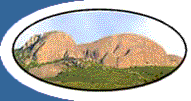Historic site unearthed
2005-09-01
ARCHEOLOGISTS from the University of Cape Town have uncovered the remnants of a Stone Age settlement on the wine farm Delta on the bank of the Berg River in Groot Drakenstein.
They believe the prehistoric site is unique in more ways than one.
According to team leaders Dave Halkett and Tim Hart, the find is a rare “double whammy”, as they simultaneously discovered the Stone-Age artifacts and the ruins of a 17th-century colonial dwelling that lay above and alongside the prehistoric site.
It appears as if the first colonist to settle on the farm in the late 1600s (Hans Silberbach and his wife Ansela van de Caab, a freed slave) chose exactly the same spot to build his home as late Stone-Age hunter-gatherers had selected some 6000 years before.
Archeologists believe the site was probably chosen because of its situation on a ridge overlooking the confluence of the Berg and Dwars Rivers.
This would have supplied abundant fresh water, attracted plenty of game for hunting, and simultaneously provided good protection from the many predators that once roamed the scrubland of Franschhoek.
“Intact Stone-Age settlement sites are extremely rare,” says Halkett.
“This is the first such site to be discovered and excavated in the Boland.” The extreme density of artifacts found, including thousands of formal tools, blades, flakes, cores and a few grinding stones, attest to an extended period of habitation by ancestors of the modern San (Bushmen).
A few shards of pottery alongside the stone tools also demonstrate that the same site was occupied subsequently by Khoi-khoi pastoralists, before the arrival of the Dutch and French Huguenots.
The 17th century dwelling that was built directly next to and on top of the pre-colonial site is a major find in its own right, apart from the remarkable coincidence of its location.
“Very few such ruins have been excavated,” says respected historical archeologist Antonia Malan of UCT – who was the first person to suggest that the site (a conspicuously large gap between an old wine cellar and the manor house) should be excavated.
Her colleague Tim Hart describes it as the oldest floor plan he has ever seen in the Cape.
The ruin consists of a simple square structure with 80cm-thick walls and cobbled stone floors, which then appears to have been incorporated into a larger building with three slightly larger rooms, and an external extension which probably served as an enclosure for farm animals.
The entire structure seems to have been demolished in the late 18th century, as none of the numerous colonial artifacts found at the site dates to later than the 1770s.
Neuroscientist and owner of Delta wine estate, Prof Mark Solms, plans to open a museum in the wine cellar near the site later this year, says that he is “thrilled to bits” by the discovery.
“It captures everything that we want to convey in our museum: the multiple layers of history that have gone into making this country, extending way beyond the arrival of Jan van Riebeeck, give our society the complexity and depth that we grapple with and enjoy today.”
The excavations are still ongoing. Meanwhile, Prof Solms is trying to work out where he should put a new drive-way, as the ruin lies slap in the middle of the drive that used to lead from his house to the entrance gates.
* Solms will launch the first Solms-Delta wines next month. They are called Hiervandaan, Lekkerwijn and Amalie.
More
News
|


